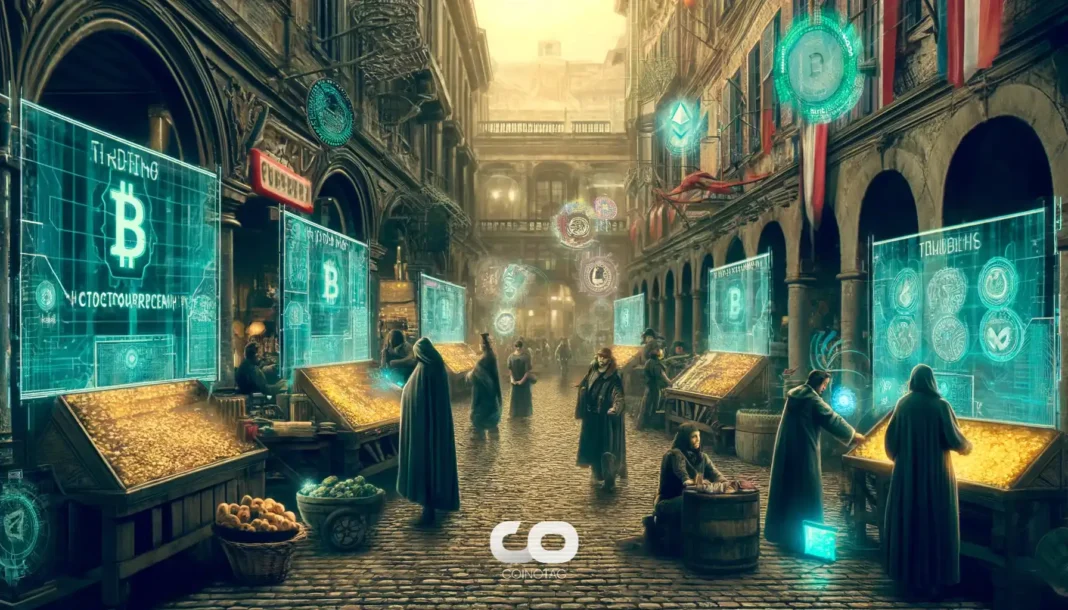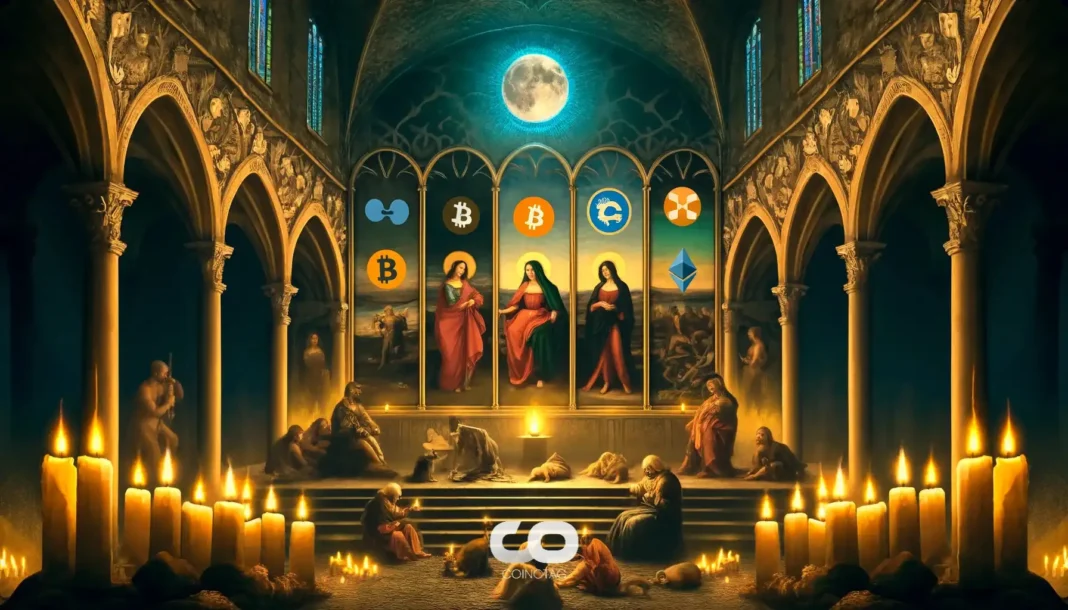| COINOTAG recommends • Exchange signup |
| 💹 Trade with pro tools |
| Fast execution, robust charts, clean risk controls. |
| 👉 Open account → |
| COINOTAG recommends • Exchange signup |
| 🚀 Smooth orders, clear control |
| Advanced order types and market depth in one view. |
| 👉 Create account → |
| COINOTAG recommends • Exchange signup |
| 📈 Clarity in volatile markets |
| Plan entries & exits, manage positions with discipline. |
| 👉 Sign up → |
| COINOTAG recommends • Exchange signup |
| ⚡ Speed, depth, reliability |
| Execute confidently when timing matters. |
| 👉 Open account → |
| COINOTAG recommends • Exchange signup |
| 🧭 A focused workflow for traders |
| Alerts, watchlists, and a repeatable process. |
| 👉 Get started → |
| COINOTAG recommends • Exchange signup |
| ✅ Data‑driven decisions |
| Focus on process—not noise. |
| 👉 Sign up → |
-
A recent social media scam misled many into believing that the US Treasury had launched an XRP wallet, raising serious concerns about misinformation in the crypto space.
-
This deceptive narrative gained traction as high-profile accounts amplified the message, capitalizing on the inexperience of new crypto investors.
-
As noted by crypto analyst Zach Rynes, the scam underscores a pervasive issue of misinformation that can exploit unsuspecting members of the crypto community.
This article explores a social media scam involving a fake US Treasury XRP wallet, discussing its implications and the role of misinformation in crypto markets.
The Emergence of a Fake US Treasury XRP Wallet
The recent surge of misinformation around cryptocurrencies exemplified by the claim of a US Treasury-created XRP wallet showcases the ongoing challenges within the industry. After the rapid proliferation of unverified claims on various platforms, the community is feeling the repercussions of such deceptions.
Critically, this incident falls within a broader trend of social media scams flourishing since the rise of cryptocurrency popularity, particularly evident in recent years. The assertion that the US Treasury has entered the XRP market ignited enthusiasm among cryptocurrency traders, despite the glaring inconsistencies that should have raised immediate skepticism.
Impact on New Investors and Community Trust
The alarming rate at which this misinformation spread can be attributed to its promotion by well-known figures within the crypto community, effectively bridging the gap between reality and fiction. Statistics indicate that a significant portion of the TRUMP meme coin holders are novice investors, unfamiliar with the telltale signs of a scam.
| COINOTAG recommends • Professional traders group |
| 💎 Join a professional trading community |
| Work with senior traders, research‑backed setups, and risk‑first frameworks. |
| 👉 Join the group → |
| COINOTAG recommends • Professional traders group |
| 📊 Transparent performance, real process |
| Spot strategies with documented months of triple‑digit runs during strong trends; futures plans use defined R:R and sizing. |
| 👉 Get access → |
| COINOTAG recommends • Professional traders group |
| 🧭 Research → Plan → Execute |
| Daily levels, watchlists, and post‑trade reviews to build consistency. |
| 👉 Join now → |
| COINOTAG recommends • Professional traders group |
| 🛡️ Risk comes first |
| Sizing methods, invalidation rules, and R‑multiples baked into every plan. |
| 👉 Start today → |
| COINOTAG recommends • Professional traders group |
| 🧠 Learn the “why” behind each trade |
| Live breakdowns, playbooks, and framework‑first education. |
| 👉 Join the group → |
| COINOTAG recommends • Professional traders group |
| 🚀 Insider • APEX • INNER CIRCLE |
| Choose the depth you need—tools, coaching, and member rooms. |
| 👉 Explore tiers → |
Zach Rynes encapsulated the situation, stating, “It’s baffling how easy it is for misinformation to spread through credible-sounding accounts. We need to do better in educating our community.” This sentiment emphasizes the necessity of enhancing digital literacy among crypto investors as a preventative measure against future scams.
Tracing the Roots of the Scam
Upon investigation, analysts traced the origins of the scam wallet to the Philippines, dispelling claims of US involvement. The wallet not only misidentified itself but also claimed transactions with prestigious financial institutions such as JPMorgan and Bank of America to lend credibility to its ruse.
| COINOTAG recommends • Exchange signup |
| 📈 Clear interface, precise orders |
| Sharp entries & exits with actionable alerts. |
| 👉 Create free account → |
| COINOTAG recommends • Exchange signup |
| 🧠 Smarter tools. Better decisions. |
| Depth analytics and risk features in one view. |
| 👉 Sign up → |
| COINOTAG recommends • Exchange signup |
| 🎯 Take control of entries & exits |
| Set alerts, define stops, execute consistently. |
| 👉 Open account → |
| COINOTAG recommends • Exchange signup |
| 🛠️ From idea to execution |
| Turn setups into plans with practical order types. |
| 👉 Join now → |
| COINOTAG recommends • Exchange signup |
| 📋 Trade your plan |
| Watchlists and routing that support focus. |
| 👉 Get started → |
| COINOTAG recommends • Exchange signup |
| 📊 Precision without the noise |
| Data‑first workflows for active traders. |
| 👉 Sign up → |
This troubling phenomenon is compounded by the fluctuating nature of crypto markets; speculations and shifts can lead people to grasp at straws in the hope of finding actionable investments. As the XRP price surged, suspicions grew around the US Treasury’s potential involvement, leading some investors to overlook red flags.
To further illustrate the situation, analysts found the wallet’s transactions were incongruent with legitimate Treasury operations, reinforcing the reality that such scams are designed to deceive the uninformed.
| COINOTAG recommends • Traders club |
| ⚡ Futures with discipline |
| Defined R:R, pre‑set invalidation, execution checklists. |
| 👉 Join the club → |
| COINOTAG recommends • Traders club |
| 🎯 Spot strategies that compound |
| Momentum & accumulation frameworks managed with clear risk. |
| 👉 Get access → |
| COINOTAG recommends • Traders club |
| 🏛️ APEX tier for serious traders |
| Deep dives, analyst Q&A, and accountability sprints. |
| 👉 Explore APEX → |
| COINOTAG recommends • Traders club |
| 📈 Real‑time market structure |
| Key levels, liquidity zones, and actionable context. |
| 👉 Join now → |
| COINOTAG recommends • Traders club |
| 🔔 Smart alerts, not noise |
| Context‑rich notifications tied to plans and risk—never hype. |
| 👉 Get access → |
| COINOTAG recommends • Traders club |
| 🤝 Peer review & coaching |
| Hands‑on feedback that sharpens execution and risk control. |
| 👉 Join the club → |

Image Source: XRPScan
Mitigating the Threat of Misinformation
As the industry continues to grow, the responsibility lies with both long-term investors and platforms to cultivate a more informed community. This includes encouraging discussions around investment hygiene, verifying sources, and engaging in dialogue that promotes critical thinking.
The crypto space, once perceived primarily as a playground for tech-savvy individuals, now has an influx of new participants. It will require collaborative efforts within the community to promote best practices and combat the proliferation of misinformation.
| COINOTAG recommends • Exchange signup |
| 📈 Clear control for futures |
| Sizing, stops, and scenario planning tools. |
| 👉 Open futures account → |
| COINOTAG recommends • Exchange signup |
| 🧩 Structure your futures trades |
| Define entries & exits with advanced orders. |
| 👉 Sign up → |
| COINOTAG recommends • Exchange signup |
| 🛡️ Control volatility |
| Automate alerts and manage positions with discipline. |
| 👉 Get started → |
| COINOTAG recommends • Exchange signup |
| ⚙️ Execution you can rely on |
| Fast routing and meaningful depth insights. |
| 👉 Create account → |
| COINOTAG recommends • Exchange signup |
| 📒 Plan. Execute. Review. |
| Frameworks for consistent decision‑making. |
| 👉 Join now → |
| COINOTAG recommends • Exchange signup |
| 🧩 Choose clarity over complexity |
| Actionable, pro‑grade tools—no fluff. |
| 👉 Open account → |
Conclusion
The emergence of the fake US Treasury XRP wallet underscores a critical need for vigilance against scams and misinformation. As the digital asset landscape evolves, community members must prioritize education and awareness to shield themselves and others from potential threats. Investors must remember that informed decisions are crucial for sustaining long-term trust and growth in the crypto industry.
| COINOTAG recommends • Members‑only research |
| 📌 Curated setups, clearly explained |
| Entry, invalidation, targets, and R:R defined before execution. |
| 👉 Get access → |
| COINOTAG recommends • Members‑only research |
| 🧠 Data‑led decision making |
| Technical + flow + context synthesized into actionable plans. |
| 👉 Join now → |
| COINOTAG recommends • Members‑only research |
| 🧱 Consistency over hype |
| Repeatable rules, realistic expectations, and a calmer mindset. |
| 👉 Get access → |
| COINOTAG recommends • Members‑only research |
| 🕒 Patience is an edge |
| Wait for confirmation and manage risk with checklists. |
| 👉 Join now → |
| COINOTAG recommends • Members‑only research |
| 💼 Professional mentorship |
| Guidance from seasoned traders and structured feedback loops. |
| 👉 Get access → |
| COINOTAG recommends • Members‑only research |
| 🧮 Track • Review • Improve |
| Documented PnL tracking and post‑mortems to accelerate learning. |
| 👉 Join now → |








